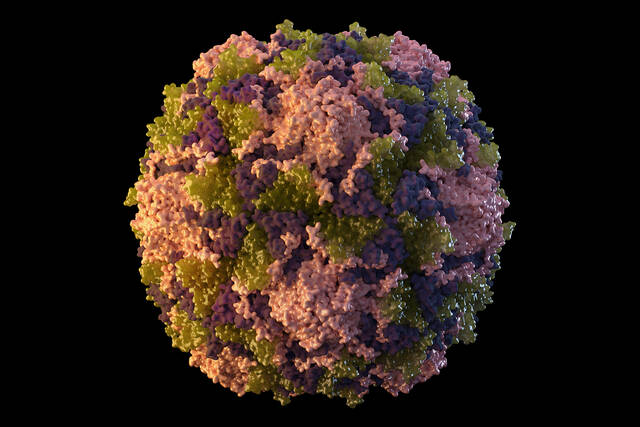What to know about the poliovirus found in New York wastewater
Poliovirus has been found in New York City’s wastewater, sparking concerns about circulation of the virus, but an infectious disease expert cautioned that it is important to understand the type of poliovirus detected and the mass vaccination status of most of the country.
Dr. Amesh Adalja, a Pittsburgh-based infectious disease and critical care expert, said the virus found in New York’s wastewater is not wild polio. Rather, it is a form of the virus shed from someone who received a live vaccine and then circulated among others.
The disease killed thousands during the 1940s and 1950s — mostly children — and paralyzed thousands more. The worst outbreak in the United States came in 1952, when there were about 20,000 cases.
“For most people, like, 199 out of 200 people, nothing happens when you get polio,” Adalja said. “But in about one in 200 cases, the virus has the ability to infect the spinal cord … which could lead to paralysis.”
Question: Wasn’t polio eradicated?
Answer: No. It was eliminated in most parts of the world, but it has not been eradicated.
“They don’t mean the same thing from an epidemiological standpoint,” Adalja said, noting that only one disease ever has been eradicated: smallpox. “So polio has been eliminated, which means that there is no local transmission going on.”
Eradication, he said, is a concept that is applied only when something is gone from the planet. Polio continues to circulate in certain parts of Africa and the Middle East.
Q: If it’s been eliminated in the United States, how are we seeing it now in New York?
A: Understanding the circumstances under which polio was detected in New York City wastewater requires understanding the two main types of polio vaccines in circulation: an injection vaccine and an oral vaccine.
The injection vaccine, developed in Pittsburgh by Dr. Jonas Salk, is a “dead” vaccine — it is created using an inactive, or dead, form of the virus.
The oral vaccine is developed using a weakened — but not dead — form of the virus. Several oral polio vaccines were developed, but the one used for mass vaccination worldwide was developed by Albert Sabin.
They are, respectively, known as the Salk vaccine and the Sabin vaccine.
When people are vaccinated with the oral vaccine, people can shed the virus, usually for only a short amount of time, Adalja said.
“People can shed that virus and, in rare circumstances, that vaccine-virus can change and cause (traditional polio symptoms),” he said. “It’s important to remember that wild polio only circulates in Afghanistan, Pakistan and Mozambique. What they found (in New York City) was not wild polio but vaccine-derived polio.”
Q: How dangerous is the vaccine-derived poliovirus?
A: It’s not, for the most part.
“The vaccine-derived polioviruses are not a problem unless you’re dealing with an unvaccinated population,” Adalja said. In those cases, the vaccine-derived virus can infect the unvaccinated, and it has the capacity to cause severe illness, including paralysis.
That’s what has happened in Rockland County, N.Y., he said, where one case was confirmed in a resident this year. The 20-year-old man suffered paralysis, according to the New York Times.
The Associated Press reported last month that the man had a vaccine-derived strain of the virus, likely from someone who received the live vaccine outside the United States. The United States has relied strictly on inactive polio vaccines since 2000.
Q: Is my vaccine still effective?
A: Like many vaccinations, a full polio vaccine regimen is recommended for children who, after they complete the series, are protected for years. The Centers for Disease Control and Prevention does, however, acknowledge that there is no way to tell just how long one is protected post-vaccination.
“It is not known how long people who received (inactivated poliovirus vaccination) will be protected against polio,” according to the CDC, “but they are most likely protected for many years after a complete series.”
Adults who are at a higher risk for exposure to polio can get one lifetime polio booster.
Q: Has the virus been detected in Allegheny County?
A: The Allegheny County Health Department doesn’t test its wastewater for poliovirus, according to LuAnn Brink, the department’s chief epidemiologist. The department said the county has “not experienced any recent cases of polio among residents.”
According to data collected for the 2019-20 school year, nearly 97% of kindergarten students in Allegheny County had received the full polio vaccination regimen. Pennsylvania long has required, among others, the polio vaccine for children to attend school in the state.
Across the country, 92.6% of children had at least three of the four doses of the vaccine by age 2, according to the CDC.
Remove the ads from your TribLIVE reading experience but still support the journalists who create the content with TribLIVE Ad-Free.

